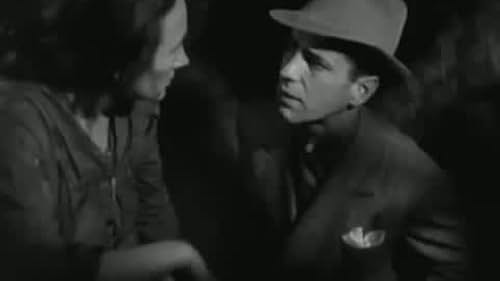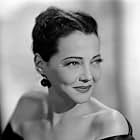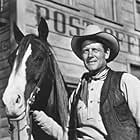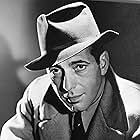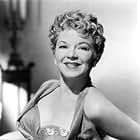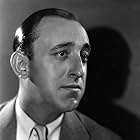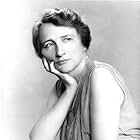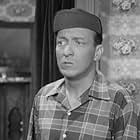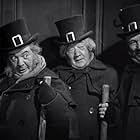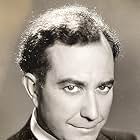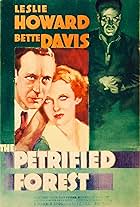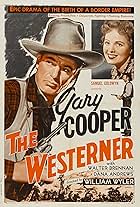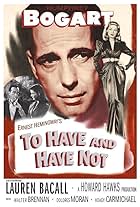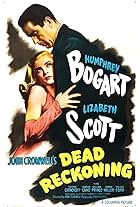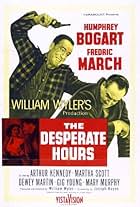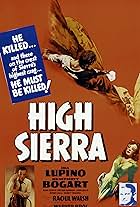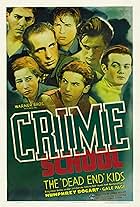IMDb RATING
7.2/10
8.8K
YOUR RATING
The lives of a young man, a young woman, an notorious gangster, and a group of street kids converge one day in a volatile New York City slum.The lives of a young man, a young woman, an notorious gangster, and a group of street kids converge one day in a volatile New York City slum.The lives of a young man, a young woman, an notorious gangster, and a group of street kids converge one day in a volatile New York City slum.
- Nominated for 4 Oscars
- 4 nominations total
Leo Gorcey
- Spit
- (as Leo B. Gorcey)
- Director
- Writers
- All cast & crew
- Production, box office & more at IMDbPro
Storyline
Did you know
- TriviaWilliam Wyler gave Claire Trevor an old purse and broken high heel shoes. He had her minimize her make-up and ordered her not to comb her hair when she got up in the morning. He wanted her to look like the downtrodden character she was playing.
- GoofsWhile getting a kid's 3 cents back, the shadow of film equipment appears on the railing.
- Crazy creditsOpening credits prologue: Every street in New York ends in a river. For many years the dirty banks of the East River were lined with the tenements of the poor. Then the rich, discovering that the river traffic was picturesque, moved their houses eastward. And now the terraces of these great apartment houses look down into the windows of the tenement poor.
- SoundtracksBoo-Hoo
(1937) (uncredited)
Music by Carmen Lombardo and John Jacob Loeb
Lyrics by Edward Heyman
Played at the upstairs party and sung by Huntz Hall in the street
Featured review
Dead End the film adaption of Sidney Kingsley's play that ran for 687 performances during the 1935-1937 seasons, was a harbinger of what Alfred Hitchcock tried to do in such films as Rope and even more so in Rear Window. The whole story is told on one very complex set showing the stark contrast of the rich penthouse dwellers with the inhabitants of the nearby tenements and flats.
Building that set on stage and for the screen must have been one expensive proposition so it was a good thing Sidney Kingsley wrote a hit.
It may be one set, but the plot of the film involves three stories and how they interconnect. Story number one is about Joel McCrea, a former slum kid himself who still lives down there while he tries to get a job as an architect. He's involved with two women, rich socialite Wendy Barrie who lives in the penthouse and Sylvia Sidney who played more working class women than anyone else during the Thirties.
Sidney works as a seamstress in a garment factory and she's currently on strike and she's got a younger brother to support who causes her much grief. The younger brother is Billy Halop and Sidney worries about the gang he runs with, the kids who later became known as the Dead End kids, later East Side Kids, later Bowery Boys. Their a rough bunch and they get a visit from a celebrity of sorts.
Which leads us to the third track in the person of Humphrey Bogart who grew up on this same block and is now a wanted fugitive of the John Dillinger variety. The kids and McCrea recognize him, the kids worship him and McCrea is willing to give him a pass for now, he's no rat. All their stories mix in this plot which does hold the interest through out the film.
Besides the Dead End Kids who didn't all play the same roles you see them play on the screen only one other player came over from Broadway for the screen version. Marjorie Main who we usually know as the rambunctious and brassy Ma Kettle plays a very serious part indeed as Humphrey Bogart's mother. You'll not forget her as she rejects her hoodlum son both the anger and sorrow she expresses, it is haunting.
Bogart got another jolt in his trip down memory lane in the slum in the person of Claire Trevor. She's usually a good time girl with a heart of gold. Her heart may be golden in Dead End, but she's a woman who's seen the seamy side of life as a prostitute. Very few prostitutes were portrayed as such during the days of The Code so in that sense Dead End was quite daring.
The film is firmly set in the Depression Thirties. That same area where in certain shots you can see the Queensborough Bridge in the near distance is some of the richest real estate on earth now. Those same buildings that are portrayed as slums now rent to yuppies at obscene figures if in fact they survived.
Though Dead End is a dated piece of work, it does offer a great glimpse into urban life for the rich and poor. This is one of Samuel Goldwyn's best productions and William Wyler gets uniformly fine performances from his talented cast of players.
Building that set on stage and for the screen must have been one expensive proposition so it was a good thing Sidney Kingsley wrote a hit.
It may be one set, but the plot of the film involves three stories and how they interconnect. Story number one is about Joel McCrea, a former slum kid himself who still lives down there while he tries to get a job as an architect. He's involved with two women, rich socialite Wendy Barrie who lives in the penthouse and Sylvia Sidney who played more working class women than anyone else during the Thirties.
Sidney works as a seamstress in a garment factory and she's currently on strike and she's got a younger brother to support who causes her much grief. The younger brother is Billy Halop and Sidney worries about the gang he runs with, the kids who later became known as the Dead End kids, later East Side Kids, later Bowery Boys. Their a rough bunch and they get a visit from a celebrity of sorts.
Which leads us to the third track in the person of Humphrey Bogart who grew up on this same block and is now a wanted fugitive of the John Dillinger variety. The kids and McCrea recognize him, the kids worship him and McCrea is willing to give him a pass for now, he's no rat. All their stories mix in this plot which does hold the interest through out the film.
Besides the Dead End Kids who didn't all play the same roles you see them play on the screen only one other player came over from Broadway for the screen version. Marjorie Main who we usually know as the rambunctious and brassy Ma Kettle plays a very serious part indeed as Humphrey Bogart's mother. You'll not forget her as she rejects her hoodlum son both the anger and sorrow she expresses, it is haunting.
Bogart got another jolt in his trip down memory lane in the slum in the person of Claire Trevor. She's usually a good time girl with a heart of gold. Her heart may be golden in Dead End, but she's a woman who's seen the seamy side of life as a prostitute. Very few prostitutes were portrayed as such during the days of The Code so in that sense Dead End was quite daring.
The film is firmly set in the Depression Thirties. That same area where in certain shots you can see the Queensborough Bridge in the near distance is some of the richest real estate on earth now. Those same buildings that are portrayed as slums now rent to yuppies at obscene figures if in fact they survived.
Though Dead End is a dated piece of work, it does offer a great glimpse into urban life for the rich and poor. This is one of Samuel Goldwyn's best productions and William Wyler gets uniformly fine performances from his talented cast of players.
- bkoganbing
- May 28, 2007
- Permalink
- How long is Dead End?Powered by Alexa
Details
- Release date
- Country of origin
- Language
- Also known as
- Dead End: Cradle of Crime
- Filming locations
- Production company
- See more company credits at IMDbPro
Box office
- Budget
- $300,000 (estimated)
- Runtime1 hour 33 minutes
- Color
- Aspect ratio
- 1.37 : 1
Contribute to this page
Suggest an edit or add missing content


